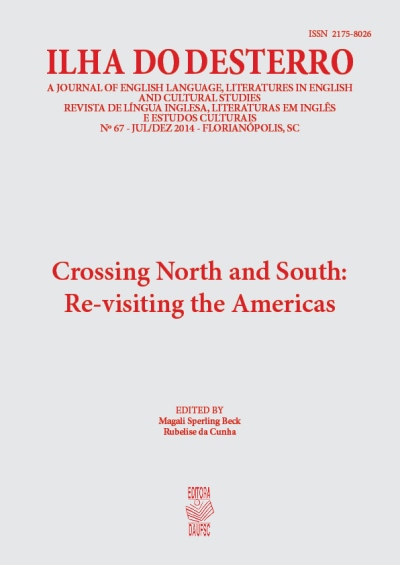Indigenous: It Depends How You Look at It. What You Call It. How You Live It.
DOI:
https://doi.org/10.5007/2175-8026.2014n67p13Resumo
In this article, we use examples from contemporary Anishinaabe artist Rebecca Belmore and the works of works of the Spiderwoman Theater Troupe to explore how contemporary Indigenous artists in the Americas negotiate the representation of Indigenous identities, identities which are always performed and entangled in a mesh of geographical locations, cultural practices and ideological borders. Through their artistic productions, many Native artists and authors participate in a larger community of voices discussing what it means to be Indigenous in the Americas and what ethical responsibilities or commitments to community are entailed in and by their work.
Downloads
Publicado
Edição
Seção
Licença
A revista Ilha do Desterro publica artigos e resenhas inéditos, referentes as áreas de Inglês, Literaturas em Língua Inglesa e Estudos Culturais. Publica volumes mistos e/ou temáticos, com artigos e resenhas em inglês e português.
Autores mantém os direitos autorais e concedem à revista o direito de primeira publicação, com o trabalho simultaneamente licenciado sob a Licença Creative Commons Attribution que permite o compartilhamento do trabalho com reconhecimento da autoria e publicação inicial nesta revista.

This work is licensed under a Creative Commons Attribution 4.0 International License.



